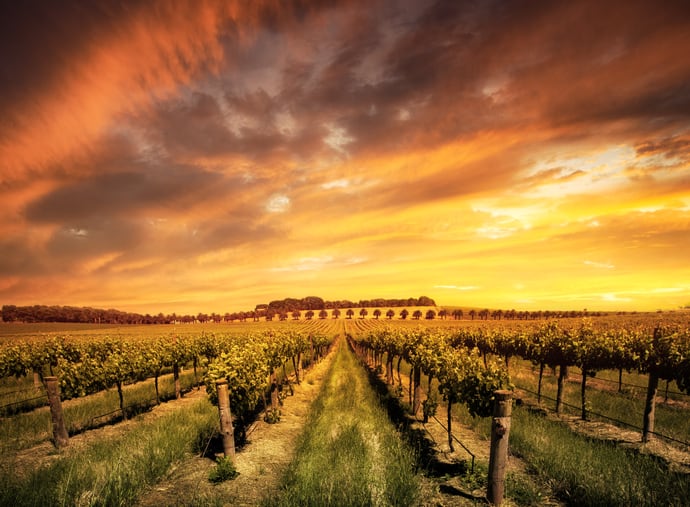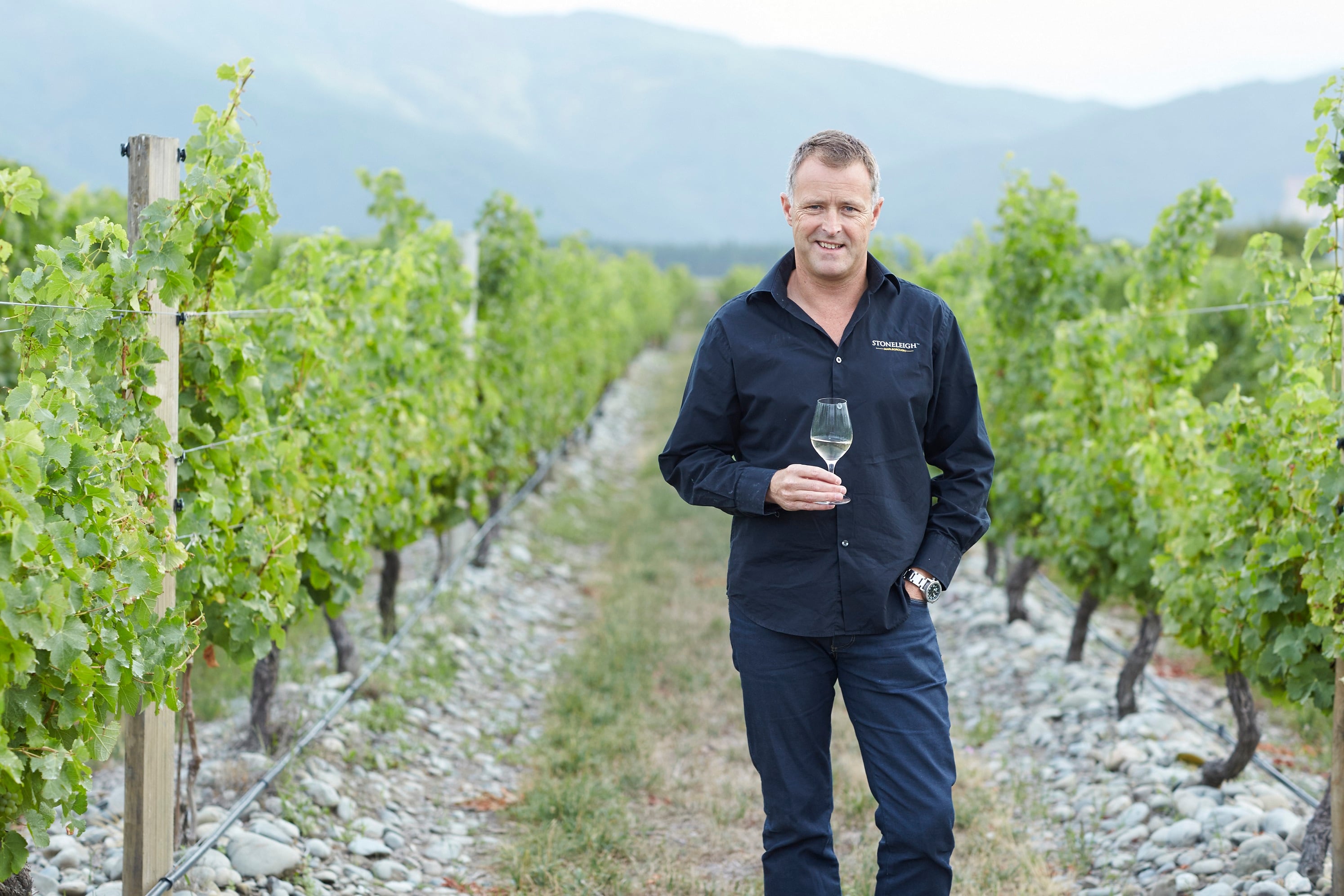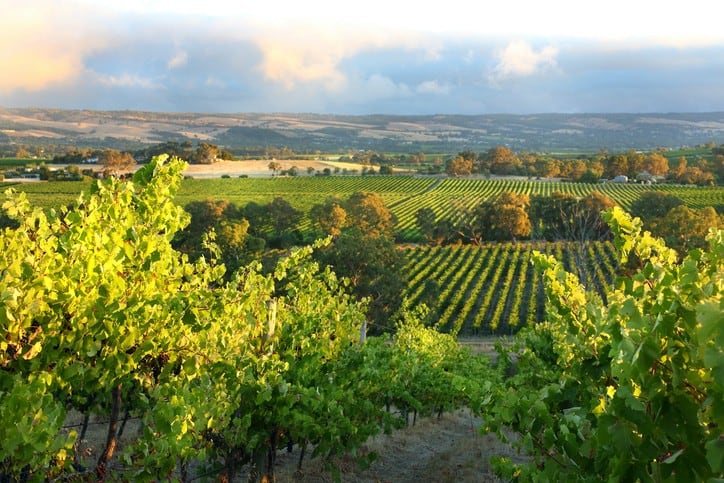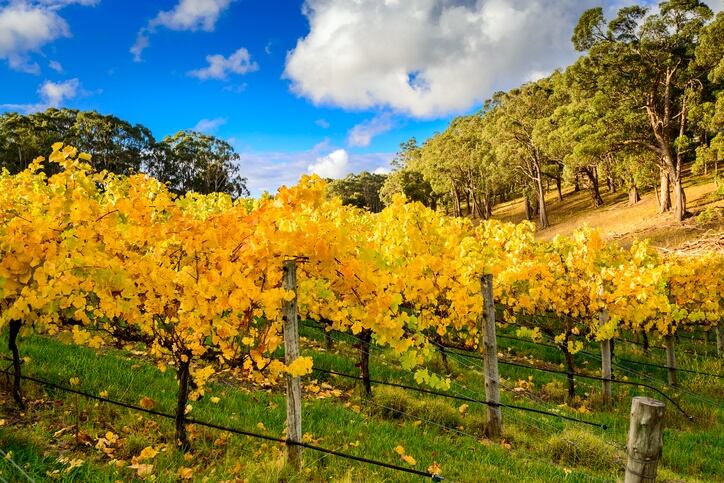To address this, the Australian Wine Research Institute and the University of Adelaide have embarked on a new smoke taint project in South Australia that will study how grain smoke affects grapes during harvest.
The research involves a series of field and winemaking studies in the coming months to discover the sensitivity of grapes to smoke from low intensity crop stubble burns. It will also seek to determine the exact point when smoke loses its potency to wine grapes.
“A lot of the state’s economy is driven by agriculture, and the biggest two industries are wine and grain. Obviously these come in contact with each other, and the burning of stubble in close proximity to grapes happens quite a bit. That can lead to some tensions,” Mark Krstic, AWRI’s business development manager, told BeverageDaily.
South Australian wine producing regions, including the Barossa and Clare valleys, are adjacent to vast swathes of grain-growing belts, which traditionally conduct their burn-offs during autumn—close to grape-picking time.
Stubble burning
Stubble burning is a long accepted agricultural practice to wipe out weeds, seeds and snails after harvest and before sowing.
South Australia’s primary industries and regional development minister Tim Whetstone said although stubble burning was not as prevalent as it once was, it remained an important tool in the grain production cycle ahead of the planting of winter crops.
“The grains and wine sectors are two primary industry super powers in South Australia and it is important they are each able to co-exist without detriment to the other,” he said.
However, for both agricultural practices taking place in such close proximity, South Australia is in dire need of devising a way for them to coexist with minimal damage done to grapes and wine production.
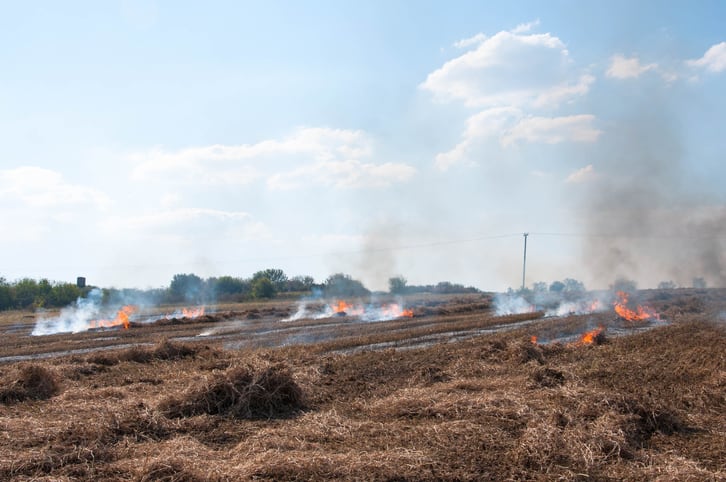
“What we are hoping to do is understand the risks that stubble burning very close to the grape vines has on tainting grapes to really grasp the risks to the grape growers,” said Dr Krstic.
“What I think will happen out of that is we will modify the guidelines around how grain growers are allowed to operate. This might mean only burning stubble at certain times of the day, probably 10-4, when we know the conditions are right.”
Most of the time during a burn smoke will float straight up directly into the atmosphere. Settling happens, however, mostly in the evening, when the smoke stays suspended in layers close to the ground where the vines are.
The research will help better forecasting around these “inversion layers”, and it is hoped this will prompt clear new guidelines to regulate when grain growers can burn.
“From our previous research on smoke taint, we know there are certain factors at play like smoke drift distance, type of smoke, time of day for burning, seasonal conditions and wind speed,” he said.
“We hope to be able to refine this through further research and give both the wine and grains industries enough information to make sound decisions when they are considering the needs of their own business, as well as their neighbours.”
California, Europe and South Africa
As well as researching the affect of smoke on grapes, AWRI advises other wine producing regions, including California, several in Europe and South African wine country, and also conducts remedial work following wildfires.
It is currently working in Tasmania in the wake of bushfires which started there in mid-January.
“There’s been a couple of quite large fires in Tasmania, that’s resulted in there being smoke around some of the wine producing areas there,” Dr Krsic said.
“We are still at an early stage and working with the industry there, receiving samples and analysing them to see what levels of potential taint might be there.”
On this kind of mission, AWRI teams will assess the levels of smoke-taint compounds in affected grapes. They also advise growers about certain measures they can take to reduce the extraction of those compounds when they are at low levels. These can include keeping the fruit cool and not pressing grapes so hard that they squeeze out the chemicals into the juice.
The team is still at an early stage of its work in Tasmania, mostly receiving samples and analysing them to see what levels of potential taint might be there. If the levels are high, there will be decisions to make over whether the grapes will be picked or not.
“If they are too tainted they’ll be left on the vine and not harvested and turned into wine. In terms of overall impact I’m not aware of what it is at this time,” Dr Krstic added.
South Australia produces about half of Australia’s wine each year, prompting the state government to provide A$60,000 (US$42,300) in funding to support the stubble burning research.
Having huge grain fields so close to vineyards threatens to become a fraught issue in years when the dates for grape picking and stubble burning converge. Fortunately, this year, it is not an issue, with a sufficient gap between the two practices. But some years it can come to a head.
“We know it can be a problem, but we know there’s a solution too: that is just by getting the two industries talking more closely and understanding each other’s production pressures,” said Dr Krstic.
"Just by getting two groups that might appear to be in conflict talking together, there’s always a good middle-ground to be found.”
Pictures: getty/bengoode; getty/isidho

